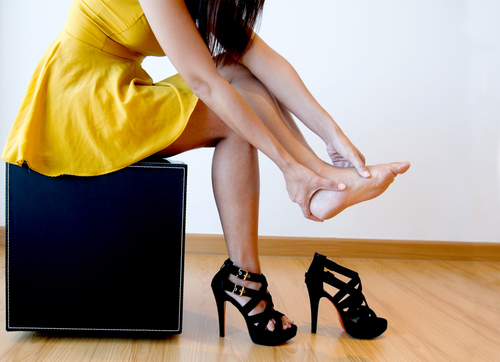Pain in the ball of your foot – Morton’s neuroma
 Morton’s neuroma is a painful condition that affects the ball of your foot, and often feels like there is something in the ball of the foot, or that there is something in the shoe bunched up.
Morton’s neuroma is a painful condition that affects the ball of your foot, and often feels like there is something in the ball of the foot, or that there is something in the shoe bunched up.
This nueroma is a thickening of the nerve tissue most commonly occurring between the third and fourth matatarsals (long bones in the foot), and occasionally between the second and third metatarsals. Involves a perineural fibrosis, where over time the sheath surrounding the nerve becomes irritated, inflamed and forms a thickened scar tissue around one of the nerves leading to your toes.
Symptoms often reported are:
- a sharp burning pain in the ball of your foot, that also may radiate into your corresponding toes (3rd/4th, or 2nd/3rd toes)
- tingling or numbness in toes
- or a feeling of standing on a pebble
Morton’s neuroma occur in response to irritation, pressure, overload or injury to one of the the nerves that leads to the toes. Risk factors that contribute to Morton’s neuroma are
- high heels or shoes that are tight or ill fitting (like boots or women’s fashion shoes) which can place extra pressure on your toes and ball of your foot
- repetitive irritation from impact sports such as running, or court sports
- foot deformities such as bunions, hammertoe or flat feet/overpronation.
Diagnosis is made by your physio or doctor through history of your symptoms and examination of your foot.
Non surgical treatment includes:
- icing/ice massage
- over the counter anti-inflammatory medication
- modification of footwear – avoid high heel or tight, narrow toed shoes, and wear wide toe box shoes
- padding devices whether it be gel, foam or felt like padding to offload the area (such as metatarsal domes) or taping techniques to offload the area
- orthotic devices to offload the area
- activity modification to avoid repetitive pressure on the neuroma until the condition improves
- physiotherapy such as deloading taping techniques, soft tissue massage
- injection therapy including corticosteroid injection into the area.
Surgery may need to be considered if not responded to conservative therapy.
